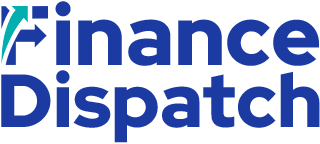Insurance subrogation is a legal process that allows your insurance company to recover the money it paid on your claim from the party responsible for the damage. While the term might sound complex, it plays a crucial role in ensuring fairness and efficiency in claim recovery. Subrogation not only protects policyholders from bearing the cost of an incident they didn’t cause, but also helps insurers manage their financial risk and keep premiums more affordable. Understanding how subrogation works can help you navigate insurance claims with greater confidence and clarity.
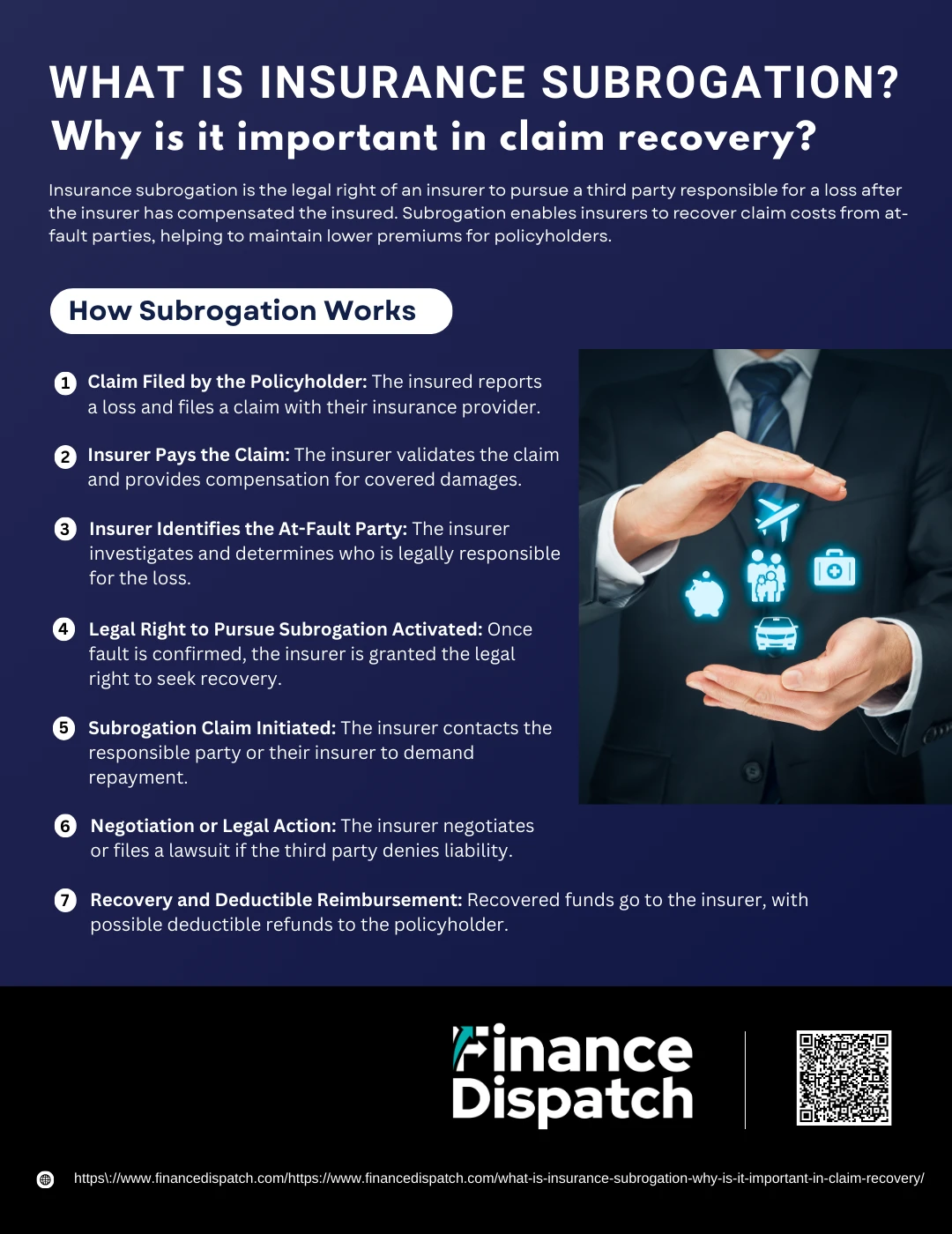 What is Insurance Subrogation?
What is Insurance Subrogation?
Insurance subrogation is the process through which your insurance company steps into your legal position after it pays your claim, allowing it to seek reimbursement from the party that caused the loss. In simpler terms, once your insurer compensates you for damages—such as in an auto accident or property loss—it can then pursue the responsible third party or their insurer to recover the amount paid. This mechanism ensures that the financial burden ultimately falls on the party at fault, not the innocent policyholder or their insurer. Subrogation maintains fairness in the insurance system and reinforces the principle that losses should be paid by those responsible for causing them.
How Subrogation Works
Subrogation allows your insurance company to take legal action against the party responsible for your loss after it has paid your claim. This ensures that you receive prompt compensation without having to personally confront or sue the at-fault party. Once the insurer recovers the money, you may also be reimbursed for your deductible. Here’s a step-by-step breakdown of how the subrogation process typically unfolds:
1. Claim Filed by the Policyholder
After experiencing a loss—such as a car accident, property damage, or injury—you notify your insurer and file a claim. This step triggers the insurance company’s responsibility to assess and process your case under the terms of your policy.
2. Insurer Pays the Claim
Once the insurer verifies the incident and confirms that the claim is valid, it compensates you for the loss. This payment could cover costs like medical bills, car repairs, or property replacement, depending on the nature of the claim and your coverage.
3. Insurer Identifies the At-Fault Party
After settling your claim, your insurer investigates to determine who is legally responsible for the loss. This may involve reviewing accident reports, eyewitness accounts, photos, or other documentation to pinpoint liability.
4. Legal Right to Pursue Subrogation Activated
With the claim paid and fault established, your insurer gains the legal authority—usually granted through your policy—to seek reimbursement from the third party that caused the damage. This is known as “stepping into your shoes.”
5. Subrogation Claim Initiated
Your insurer contacts the at-fault party or their insurance provider to initiate a subrogation claim. This step often begins with a formal demand for payment and supporting documentation of the loss.
6. Negotiation or Legal Action
If the responsible party or their insurer accepts fault, a settlement may be reached quickly. However, if they dispute liability or refuse to pay, your insurer may escalate the matter by filing a lawsuit to recover the funds.
7. Recovery and Deductible Reimbursement
When your insurer successfully recovers funds from the at-fault party, it first reimburses itself for the claim amount. If your deductible was part of the claim, you may receive a refund for that amount as well—either in full or in part, depending on state laws and policy terms.
Types of Subrogation
Subrogation isn’t a one-size-fits-all concept—it comes in different legal forms depending on how the insurer gains the right to pursue the at-fault party. Each type has its own origin and application, whether it’s based on fairness, contract terms, or statutory law. Understanding these types can help clarify when and how subrogation applies in various insurance situations.
1. Equitable Subrogation
Equitable subrogation arises from the principle of fairness, even if there is no explicit mention in a written contract. It is used when an insurer has paid for a loss that was caused by someone else and it would be unjust for the at-fault party to escape financial responsibility. For example, if your health insurer pays for surgery due to injuries caused by another person, it may pursue equitable subrogation to recover those costs—even without a contract clause—because justice demands it.
2. Contractual (or Conventional) Subrogation
This type is defined within the terms of your insurance policy. When you sign a contract with your insurer, you often agree to allow the insurer to recover costs from a third party on your behalf. Contractual subrogation is legally binding because it is written into the agreement. It usually specifies how the process works and what cooperation is expected from you. For instance, you may be required to assist in the legal proceedings or avoid any actions that impair the insurer’s right to recover.
3. Statutory Subrogation
Statutory subrogation is established by legislation. It applies in situations where the law automatically gives the insurer the right to recover, even if there’s no agreement or claim of fairness. This is common in areas like workers’ compensation or government-backed insurance programs. For example, a workers’ compensation insurer that pays for an employee’s injury may be granted subrogation rights by state law to seek recovery from a negligent third party like an equipment manufacturer.
Real-Life Example of Subrogation
Understanding subrogation becomes easier when you look at real-world scenarios where it’s applied. These examples illustrate how insurance companies recover claim payments from the parties responsible for causing damage, injury, or loss—often without requiring much involvement from the policyholder.
Common Subrogation Scenarios:
1. Auto Accident Involving another Driver: You’re hit by a driver who runs a red light. Your insurer pays for your car repairs and medical bills. Then, your insurer seeks reimbursement from the at-fault driver’s insurance company—including your deductible.
2. Faulty Product Causes Property Damage: A defective kitchen appliance catches fire and damages your home. After paying for repairs, your homeowner’s insurance company sues the manufacturer to recover the cost.
3. Workplace Injury on Third-Party Property: An employee slips on a wet floor at a client’s building during a business visit. The workers’ compensation insurer pays the claim and then sues the property owner for failing to maintain safe conditions.
4. Health Insurance Recovery from At-Fault Driver: You’re injured in a car crash caused by someone else. Your health insurer covers your medical expenses but then subrogates against the other driver’s insurer to recover what was paid.
5. Construction Site Accident: A contractor’s employee is injured due to unsafe equipment rented from another company. The workers’ compensation insurer covers the injury costs, then pursues subrogation against the equipment provider for negligence.
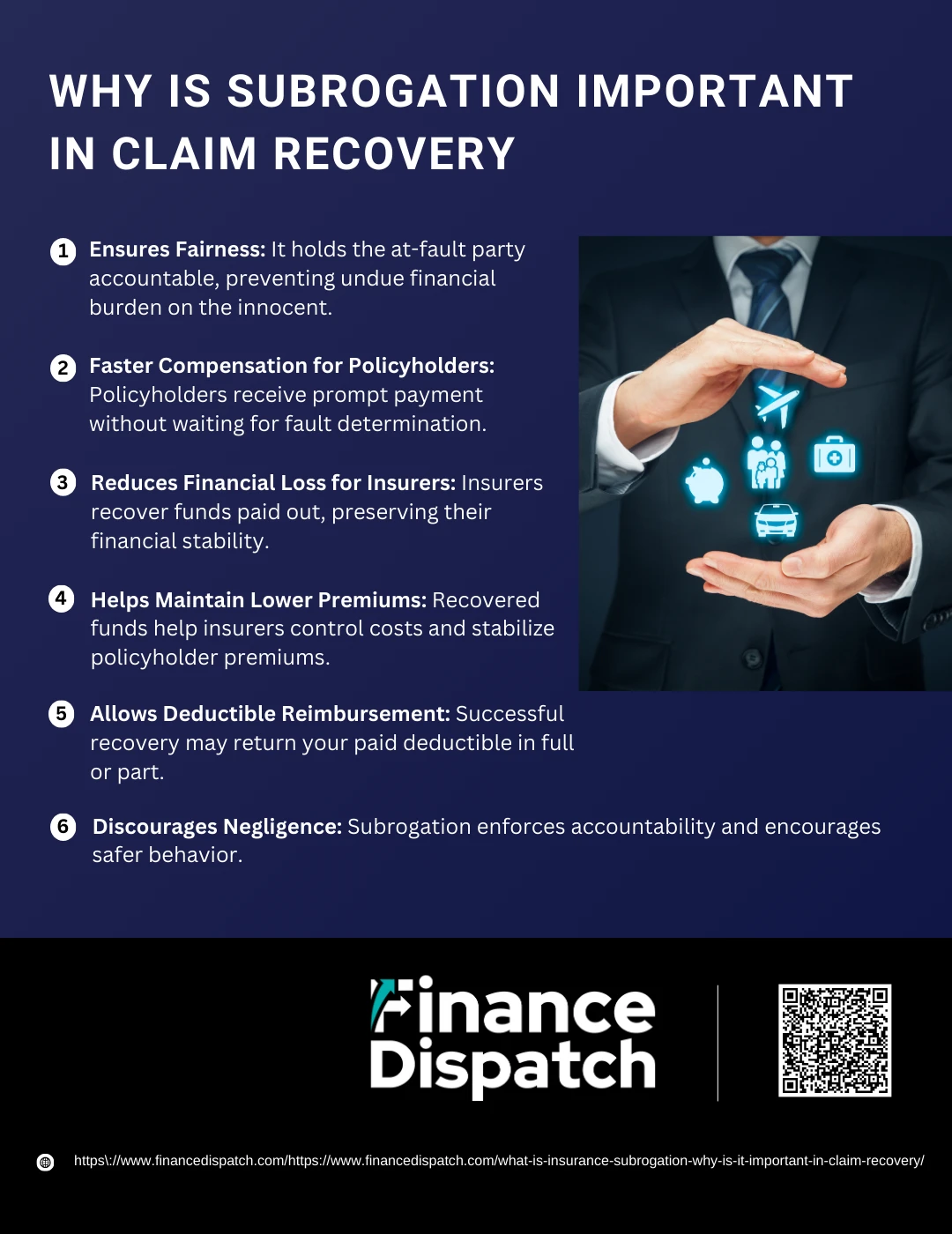 Why is Subrogation Important in Claim Recovery?
Why is Subrogation Important in Claim Recovery?
Subrogation is more than just a behind-the-scenes legal process—it’s a foundational element that ensures justice, financial efficiency, and balance in the insurance industry. When an insurance company pays a claim on behalf of its policyholder, subrogation gives it the right to recover that money from the person or party actually responsible for the loss. This process helps maintain fairness, protects insurers from unnecessary financial strain, and benefits policyholders through faster payouts and potential deductible refunds. Here’s why subrogation is vital in claim recovery:
1. Ensures Fairness
Subrogation ensures that the burden of loss doesn’t fall unfairly on the innocent party or their insurer. Instead, the responsible third party is held accountable. Without subrogation, the wrong party might walk away without paying, while the insurance company—and ultimately, the policyholder—would bear the cost.
2. Faster Compensation for Policyholders
Rather than waiting for a lengthy legal battle with the at-fault party, policyholders receive compensation promptly from their own insurer. Subrogation then allows the insurer to recover those funds later, speeding up the claims process for the insured.
3. Reduces Financial Loss for Insurers
Every time an insurer pays a claim, it experiences a financial loss. Through subrogation, the company can recover some or all of that money from the at-fault party. This recovery improves the insurer’s financial health and allows it to maintain robust claims-paying ability.
4. Helps Maintain Lower Premiums
When insurers successfully recover losses via subrogation, they avoid absorbing the full cost of claims. This helps stabilize loss ratios and can prevent premiums from increasing unnecessarily across the board for other policyholders.
5. Allows Deductible Reimbursement
If your insurer successfully recovers the full cost of a claim, they may also recover your deductible and return it to you. This means you’re not only reimbursed for damages but also for the out-of-pocket portion you initially had to pay.
6. Discourages Negligence
Subrogation holds at-fault parties financially accountable, which encourages individuals, businesses, and third-party service providers to adopt safer practices and avoid negligent behavior. This has a broader positive impact on public safety and industry standards.
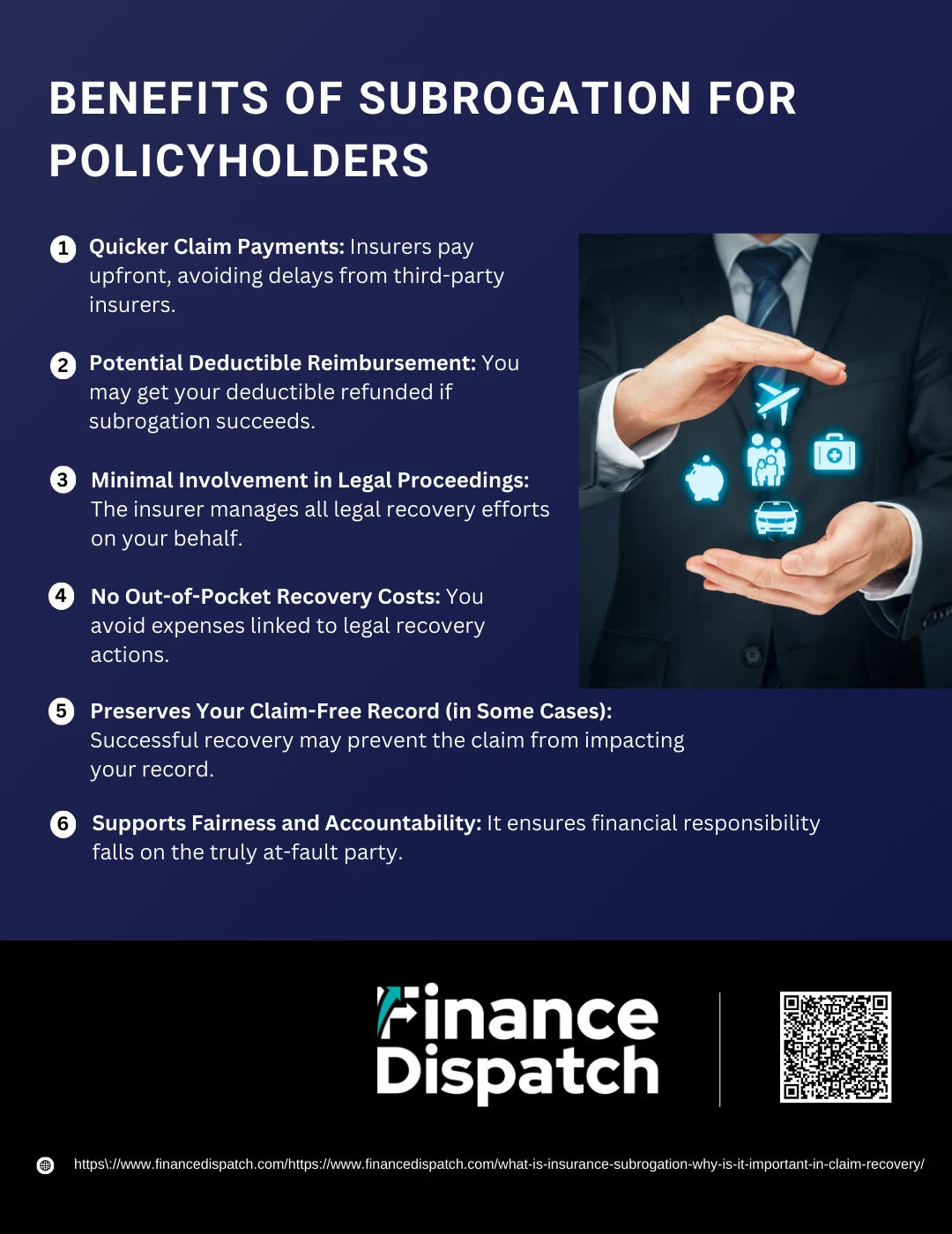 Benefits of Subrogation for Policyholders
Benefits of Subrogation for Policyholders
Subrogation may seem like a technical, behind-the-scenes process handled by insurance companies, but it actually provides significant advantages to you as a policyholder. When your insurer pays for damages you didn’t cause and then recovers those funds from the responsible party, you benefit both financially and procedurally. Below are the key ways subrogation works in your favor during the claim recovery process:
1. Quicker Claim Payments
One of the most immediate benefits is fast claim resolution. Instead of waiting for the at-fault party’s insurer to accept responsibility or complete their investigation, your own insurance company steps in to pay your covered damages. This ensures you aren’t left dealing with delays in receiving payment for car repairs, medical costs, or property damage.
2. Potential Deductible Reimbursement
If you had to pay a deductible when your insurer handled the claim, you might get that money back. When subrogation is successful, your insurer can recover not only the claim amount but also your deductible. This means your out-of-pocket expense could be fully or partially refunded, which is a direct financial benefit.
3. Minimal Involvement in Legal Proceedings
Subrogation spares you from the hassle of dealing with legal action against the at-fault party. The insurer handles all communication, negotiation, and if necessary, litigation. You don’t have to appear in court or pursue the other party yourself, making the process easier and less stressful for you.
4. No Out-of-Pocket Recovery Costs
Legal actions to recover damages can be expensive and time-consuming if you had to initiate them yourself. With subrogation, your insurer takes on this responsibility at no cost to you. You’re spared from legal fees, attorney retainers, and other costs typically associated with recovering damages.
5. Preserves Your Claim-Free Record (in Some Cases)
If the fault clearly lies with another party and your insurer successfully recovers the payment, the incident may not be recorded as a chargeable claim. This can help keep your insurance premiums stable and protect your claims history, depending on the insurer’s policies and your state’s regulations.
6. Supports Fairness and Accountability
Subrogation ensures that the financial burden is placed on the party truly responsible for the damage. This not only upholds fairness but also discourages negligence by making it clear that insurers will hold at-fault parties accountable—even when they’re not the direct claimant.
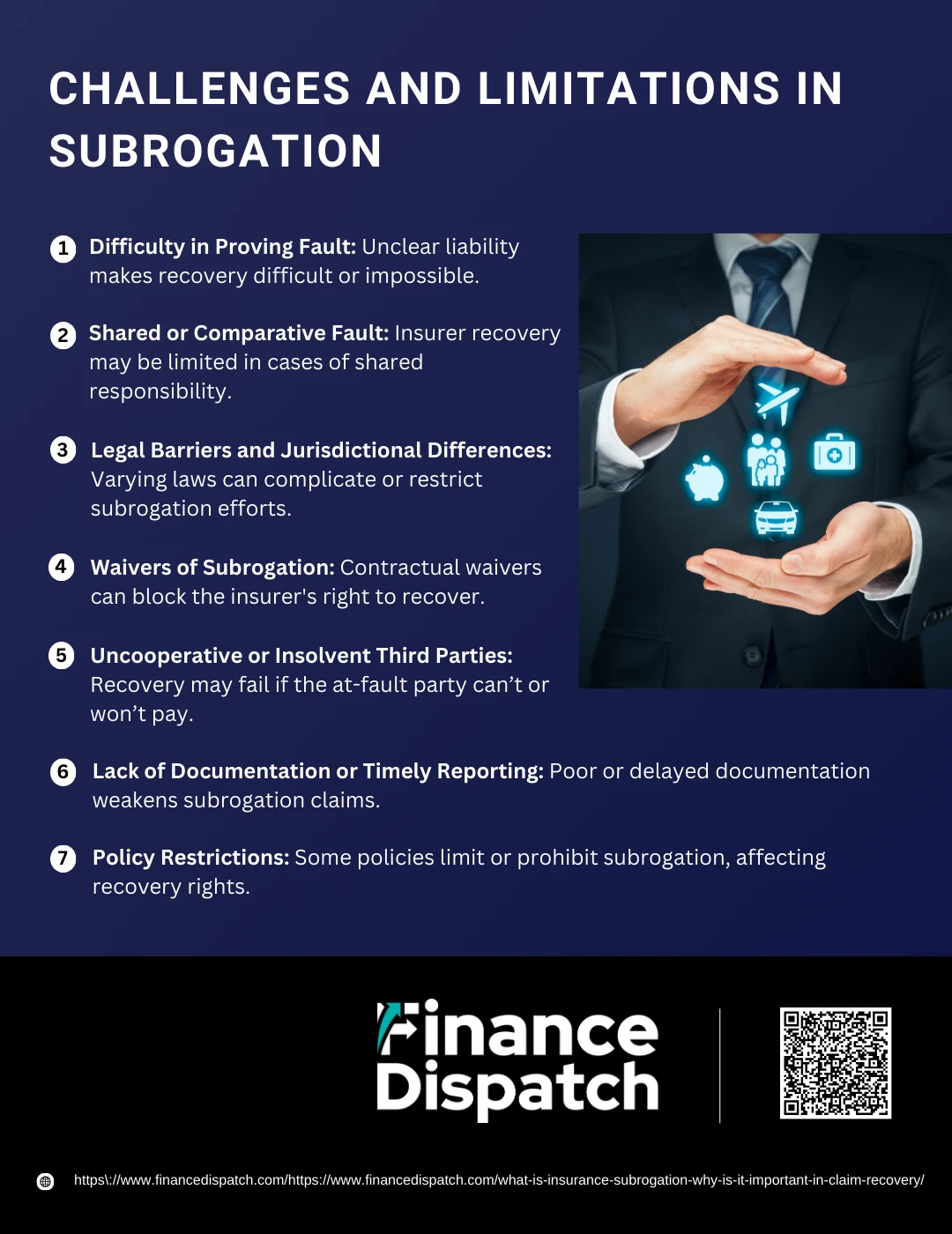 Challenges and Limitations in Subrogation
Challenges and Limitations in Subrogation
While subrogation offers clear benefits for both insurers and policyholders, the process is not always straightforward. There are several challenges and legal limitations that can affect the success, timing, and outcome of a subrogation claim. These obstacles can arise from legal disputes, insufficient evidence, complex fault determinations, or policy language restrictions. Understanding these limitations can help set realistic expectations and highlight the importance of cooperation and clear documentation during the claim process.
1. Difficulty in Proving Fault
A successful subrogation claim depends on clearly establishing who was at fault. In cases where liability is disputed or unclear—such as multi-vehicle accidents or indirect property damage—it becomes challenging for the insurer to recover the amount paid.
2. Shared or Comparative Fault
In some jurisdictions, fault may be split between parties. This means the insurer can only recover a portion of what was paid, based on the degree of fault attributed to each party. If you’re found partially responsible, your insurer’s recovery—and your deductible refund—may be reduced.
3. Legal Barriers and Jurisdictional Differences
Laws governing subrogation vary by state or country. Deadlines for filing, documentation requirements, and recognized rights of recovery can differ significantly, which can either restrict or complicate the process.
4. Waivers of Subrogation
Sometimes, policyholders or third parties sign waivers of subrogation—contractual agreements that prevent the insurer from pursuing recovery. These waivers can block the insurer’s legal rights and may also affect your ability to recover deductibles or avoid claim charges.
5. Uncooperative or Insolvent Third Parties
If the at-fault party or their insurer refuses to cooperate, denies liability, or lacks the financial resources to pay, subrogation efforts may fail or take significantly longer. This may also mean the insurer has to pursue costly legal action with no guarantee of recovery.
6. Lack of Documentation or Timely Reporting
Insurers rely on thorough records to prove the claim and pursue subrogation. Delayed reporting, missing evidence, or poorly documented claims can weaken or invalidate the subrogation effort entirely.
7. Policy Restrictions
Some insurance policies may include specific language that limits or prohibits subrogation in certain scenarios. Policyholders may unknowingly agree to these terms, restricting the insurer’s ability to recover payments and reducing potential reimbursements.
Subrogation vs. Reimbursement: Key Differences
Subrogation and reimbursement are two legal concepts in insurance that both involve recovering money, but they operate in different ways and serve different purposes. Subrogation allows your insurer to step into your shoes and recover damages from the at-fault party after paying your claim. Reimbursement, on the other hand, involves you—the policyholder—returning money to your insurer if you receive compensation from another source after already being paid. Understanding the distinction between the two is important for knowing your rights and obligations under an insurance policy.
Comparison Table: Subrogation vs. Reimbursement
| Feature | Subrogation | Reimbursement |
| Who initiates the action? | Insurance company | Policyholder |
| When does it apply? | After insurer pays your claim and seeks recovery | After you receive money from a third party |
| Whose rights are used? | Insurer steps into your legal rights | You return funds already received from the insurer |
| Purpose | To recover costs from the at-fault party | To prevent double compensation |
| Typical Scenario | Auto accident where insurer sues at-fault driver | You settle with a third party after a payout |
| Policyholder’s role | Usually passive, insurer handles process | Active, must notify and repay insurer if required |
| Legal basis | Rooted in indemnity and fairness principles | Based on contract obligations |
Things to Remember About Subrogation
Subrogation plays a vital role in protecting both you and your insurance provider after a claim is paid. While much of the process happens behind the scenes, it’s important to understand your responsibilities and rights, as well as how subrogation can affect your claim, your deductible, and future premiums. Keeping a few essential points in mind can help you navigate subrogation smoothly and avoid potential issues.
Key Points to Remember:
1. Subrogation begins after your insurer pays your claim.
Your insurance company must compensate you first before it can pursue the at-fault party for recovery.
2. You may be reimbursed for your deductible.
If subrogation is successful, you could receive a full or partial refund of the deductible you initially paid.
3. Always report accidents or losses promptly.
Delayed reporting can complicate or weaken your insurer’s ability to subrogate effectively.
4. Avoid signing waivers of subrogation without approval.
Such waivers can eliminate your insurer’s right to recover funds, and may even affect your coverage.
5. Your cooperation may be required.
Insurers may need your help in providing documents, statements, or clarification to support their recovery effort.
6. You can’t seek double compensation.
If you receive money from both your insurer and the at-fault party, you may need to reimburse your insurer to avoid overcompensation.
7. Laws vary by state and policy.
Subrogation rights and processes can differ depending on jurisdiction and specific policy terms, so always review your policy carefully.
Conclusion
Subrogation is a crucial yet often overlooked part of the insurance process that ensures fairness, efficiency, and accountability in claim recovery. By allowing your insurer to recover costs from the party at fault after paying your claim, subrogation helps you receive prompt compensation while keeping premiums manageable. It also protects policyholders from bearing the financial burden of losses they didn’t cause and encourages responsible behavior by holding negligent parties accountable. Understanding how subrogation works, its types, benefits, and limitations empowers you to make informed decisions and cooperate effectively when claims arise.
